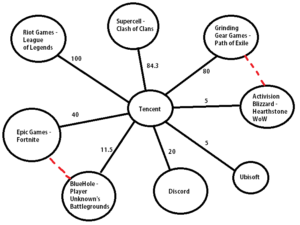There exists a genre of video games that picks at the brain’s ability to make critical decisions and promotes analytical abilities. Can you guess what it is? In my opinion, nothing makes players “think” more than strategy games. Strategy games, especially ones that utilize entities such as “resources” are an extreme catalyst for players to develop their ability to devise strategies and predict opposing strategies. This is similar to the concept of Game Theory.
This post in specific, I would like to dive deeper into a specific sub-genre that might not be too popular amongst the masses: rogue-like survival games, or more specifically Escape from Tarkov. EFT is a realistic first-person-shooter survival game that encompasses a psudo-rogue-like element to the game. For those who do not know what rogue like means: it is when your character dies, they die forever. What this entails is that your character, and everything they held in possession, is lost forever, which gets us to the main topic: the mentality of players and how they handle gear fear – the fear of losing their gear. EFT, in short, is a game where you enter zones called “raids”, and loot goods around the zone and extract. Should you succeed, you gain everything you looted as payoff, but as mentioned earlier, if you fail and die, everything you picked up as well as what you brought in initially is lost.

This brings me to the first Game Theory application: What is the best way to ensure victory? For those who are familiar with these types of games, common first thoughts would be to “bring in the best equipment (better guns, better armour) to reduce the chances of losing” which could be represented as such: (Note: EFT is not a 2 player game, but for the sake of this current illustration, it will be dumbed down to 2 players)
As seen in the chart, if these 2 players encounter each other in the raid, the difference in gear can dictate who comes out on top. However what about the profit?

Profit in this case would be calculated by what the winning player gets out of defeating the other. As seen above, if neither player is geared, no one wins anything regardless of who the winner is, where as if a player is not geared and defeats a geared player, their profit would be all the equipment previously owned by the other player. Meanwhile if both players are geared, they would be require to spend some of their resources in order to gain more resources, simplified to a trade off of 50/50. (In case this point is unclear, both players need to spend bullets, and risk damaging their armour, both are the resources players invested in, in order to gain the other’s (better? equally damaged? worse?) equipment.
Taking into account both tables, nash equilibrium exists (U ,L) and more complicatedly (D,R). Since if player 1 decides to wear no gear, Player 2 might consider wearing full gear, for a 99% win chance, however if they win, they gain nothing and in turn actually risks a 1% chance to lose everything. So with the mentality to reduce LOSS, both players will opt to enter raids with no gear. However, in order to gain a profit, with the mentality to reduce RISK, both players will opt to enter raids with full gear.
This interesting balance between Risk and Loss Aversion, is what make Escape From Tarkov a mentally suspensful game that keeps players engrossed and engaged unlike any other game ive seen. There are a bunch of other factors in EFT that can be analysed by Game Theory to which I invite you, to explore and analyse to the best the game has to offer.
Bibliography
http://www.theemotionalinvestor.org/wp-content/uploads/2012/05/Risk-vs-Loss-Aversion.pdf
https://www.escapefromtarkov.com/

